非搏动性耳鸣
非搏动性耳鸣
非搏动性耳鸣主要指的是主观性耳鸣,按病因进一步分为特发性耳鸣(无明确病因)和继发性耳鸣(除感音神经性耳聋外存在其他明确病因)。特发性耳鸣病因尚不清楚。继发性耳鸣的主要病因有耳毒性药物引起的耳鸣、梅尼埃病、偏头痛、外耳道炎、中耳炎,咽鼓管功能紊乱、耳硬化症、肿瘤等,但即使去除病因后耳鸣仍可能存在。因此,大量研究证实外周听觉系统病变,如噪声暴露或耳蜗病变导致的听力下降,是主观性耳鸣的触发因素。而中枢神经系统中的听觉系统、边缘系统等的可塑性改变是主观性耳鸣发生和维持的关键。
基于继发性耳鸣的病因诊断,有分辨尺度国际领先(达0.05mm)的超高分辨率CT、超高端的螺旋CT、超高端的磁共振设备,有HRCT、双期增强CT、磁共振高分辨水成像、磁共振动态增强、磁共振内耳钆造影等成像技术检出病因。在治疗方面,有听神经瘤切除、中耳炎乳突根治、内淋巴囊减压、佩戴助听器等针对性治疗手段。针对主观性耳鸣的发生机制,本中心开展了以下方面的诊断工作:①采用常规纯音测试和精细化纯音测试相结合的听力学检查技术,精准探查耳鸣患者的隐匿性听力损失;②采用多模态影像技术(耳科专用CT、静息态功能磁共振技术、扩散张量成像技术、大脑形态学分析技术、动脉自旋标记技术)分别从结构、功能、灌注等多维度探究耳鸣脑重塑机制。在治疗方面,有教育和咨询、认知行为治疗、声治疗验配、人工耳蜗植入、药物治疗、手术等个性化治疗手段。
一、主观性耳鸣评估技术:
1. DTI技术
本中心首次采用扩散张量成像技术(DTI)评估了不同侧别(左侧、右侧)特发性耳鸣患者的大脑白质变化特征,发现耳鸣侧别对患者的脑白质异常变化存在重大影响,其中左侧耳鸣患者较右侧耳鸣患者脑白质体积及微观结构变化更明显。
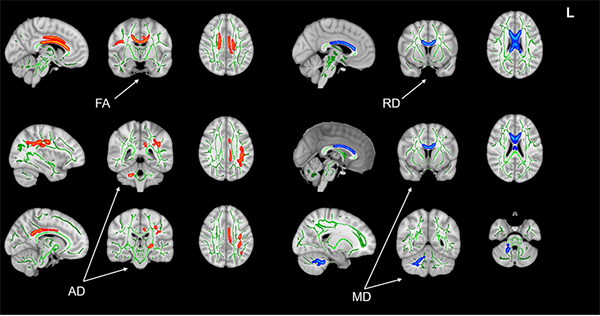
图1.左侧耳鸣患者与右侧耳鸣患者脑白质微结构变化存在显著差异(红色代表升高,蓝色代表降低)
2. VBM技术
本中心采用基于体素形态学方法(VBM)评估了疗效不同耳鸣患者脑结构变化特征,证实右侧额中回、中央前回可能是预测特发性耳鸣治疗效果的影像标志物,同时为声音治疗前患者筛选提供了依据。
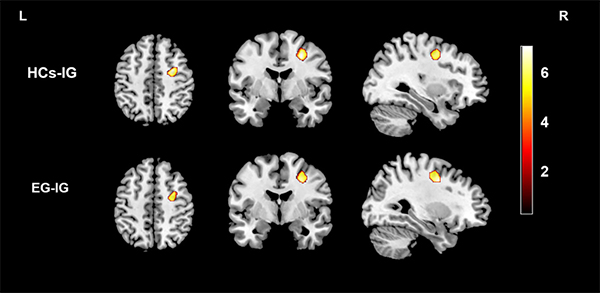
图2. 治疗效果不同耳鸣患者脑结构变化差异区域(右侧额中回、中央前回)
3. fMRI技术
本中心采用组水平独立成分分析方法(GCA)评估了疗效不同耳鸣患者静息态脑网络变化特征,证实前默认网络及听觉网络内功能连接变化可能是预测原发性耳鸣疗效的影像标志物,同时为治疗前的患者筛选提供了依据。
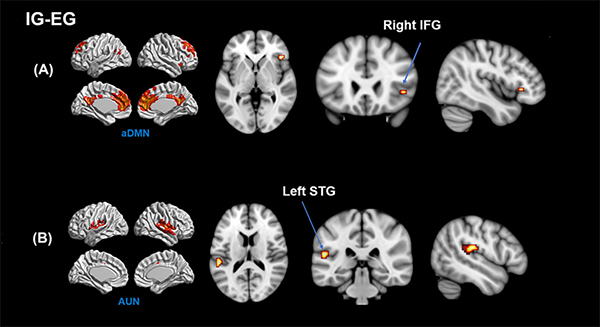
图3. 治疗效果不同耳鸣患者脑网络变化差异区域(aDMN:前默认网络;AUN:听觉网络)
4. ASL技术
动脉自旋标记技术是以动脉血作为内源性示踪剂,可无创评估脑灌注状态。本中心基于ASL技术评估了主观性耳鸣患者听觉皮层的灌注状态,发现耳鸣患者的双侧初级听觉皮层的脑血流量显著增高,并且左侧初级听觉皮层的CBF与耳鸣严重程度呈正相关。
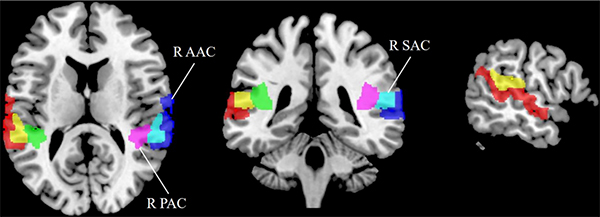
图4.主观性耳鸣患者双侧听觉皮层脑血流改变
二、治疗手段
1.窄带声治疗
声治疗是目前指南推荐且临床最常用的耳鸣一线治疗方式。本中心前期招募特发性耳鸣患者给与6个月窄带声治疗,并采用多模态磁共振手段评估其疗效。首次发现声治疗后耳鸣患者右侧海马旁回、右侧尾状核、左侧颞上回、左侧楔状和右侧距状回等区域灰质体积降低趋于正常,患者临床症状显著改善。证实声治疗对耳鸣患者皮层萎缩具有积极治疗效果。
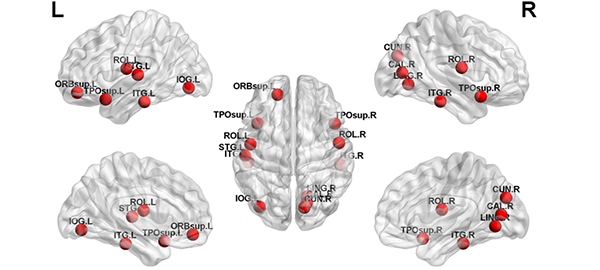
图5.特发性耳鸣患者6个月声治疗前后脑结构差异区域
2.多元复合声治疗
根据耳鸣匹配和残余抑制的结果给患者定制个性化声。以耳鸣匹配频率为中心频率选择窄带噪声,响度的设定以刚好掩盖患者耳鸣声为标准进行设定,并将窄带噪声、自然环境背景声、音乐声通过平台自带系统进行声处理融合后进行双耳给声声治疗。其中自然环境背景和音乐声均根据患者的喜好由患者自行选择,响度可根据患者的舒适度自行选择。
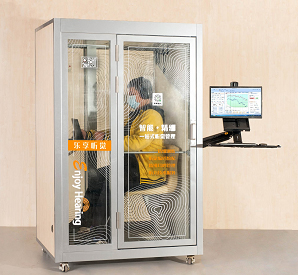
图6.多元复合声治疗平台
3.切迹音乐治疗
该治疗方案根据耳鸣患者的纯音听力、耳鸣频率匹配、患者自主选择喜爱音乐的结果进行个性化切迹治疗。具体流程如下:①根据患者选取的音乐频谱特征,对频谱能量按照从低到高进行再分配,使能量谱均衡化;②去除均衡化后的音乐中以耳鸣频率为中心的1/2 倍的频带;③在去除后的切口边缘两侧的3/8倍频程宽度内增加响度20 dB,使切迹音乐所引起的侧向抑制效果最大。经过上述步骤,得到每名患者专属的个性化切迹音乐。
三、研究方向
1、基于静息态功能磁共振单侧静脉源性耳鸣的脑中枢化机制研究
2、基于多模态脑影像拓扑特征的耳鸣声治疗疗效预测模型研究
3、基于多尺度多模式成像探究耳鸣小鼠模型的听觉-边缘系统神经重塑机制
4、耳鸣的神经血管偶联机制研究
四、阶段性成果(近5年)
1. Lv, H., Liu, J., Chen, Q., Ji, J., Zhai, J., Zhang, Z., Wang, Z., Gong, S., & Wang, Z. (2024). Brain Network Evaluation by Functional-Guided Effective Connectivity Reinforcement Learning Method Indicates Therapeutic Effect for Tinnitus. IEEE Trans. Neural Syst. Rehabil. Eng. 32, 1132-1141. doi: 10.1109/TNSRE.2024.3373335.
2. Lv, H., Liu, J., Chen, Q., Zhang, Z., Wang, Z., Gong, S., Ji, J., & Wang, Z. (2023). Brain Effective Connectivity Analysis Facilitates the Treatment Outcome Expectation of Sound Therapy in Patients With Tinnitus. IEEE Trans. Neural Syst. Rehabil. Eng. 31, 1158-1166. Doi: 10.1109/TNSRE.2023.3241941.
3. Chen, Q., Lv, H., Wang, Z., Li, X., Wang, X., Huang, Y., Zhao, P., Yang, Z., Gong, S., & Wang, Z. (2023). Multimodal quantitative magnetic resonance imaging of the thalamus in tinnitus patients with different outcomes after sound therapy. CNS Neurosci. Ther. 29, 4070-4081. doi: 10.1111/cns.14330.
4. Chen, Q., Lv, H., Wang, Z., Li, X., Wang, X., Huang, Y., Zhao, P., Yang, Z., Gong, S., & Wang, Z. (2023). Role of insula and its subregions in progression from recent onset to chronic idiopathic tinnitus. Brain Commun. 5, fcad261. doi: 10.1093/braincomms/fcad261.
5. Chen, Q., Lv, H., Wang, Z., Wei, X., Liu, J., Liu, F., Zhao, P., Yang, Z., Gong, S., & Wang, Z. (2022). Distinct brain structural‐functional network topological coupling explains different outcomes in tinnitus patients treated with sound therapy. Hum. Brain Mapp. 43, 3245-3256. Doi: 10.1002/hbm.25848.
6. Chen, Q., Lv, H., Wang, Z., Wei, X., Zhao, P., Yang, Z., Gong, S., & Wang, Z. (2021). Outcomes at 6 months are related to brain structural and white matter microstructural reorganization in idiopathic tinnitus patients treated with sound therapy. Hum. Brain Mapp. 42, 753-765. doi: 10.1002/hbm.25260.
7. Chen, Q., Lv, H., Wang, Z., Wei, X., Zhao, P., Yang, Z., Gong, S., & Wang, Z. (2022). Lateralization effects in brain white matter reorganization in patients with unilateral idiopathic tinnitus: a preliminary study. Brain Imaging Behav. 16, 11-21. Doi: 10.1007/s11682-021-00472-1.
8. Chen, Q., Lv, H., Wang, Z., Wei, X., Zhao, P., Yang, Z., Gong, S., & Wang, Z. (2021). Brain Structural and Functional Reorganization in Tinnitus Patients Without Hearing Loss After Sound Therapy: A Preliminary Longitudinal Study. Front. Neurosci. 15, Article 573858. doi: 10.3389/fnins.2021.573858.
9. Chen, Q., Lv, H., Wang, Z., Wei, X., Liu, J., Zhao, P., Yang, Z., Gong, S., & Wang, Z. (2021). Pretreatment intranetwork connectivity can predict the outcomes in idiopathic tinnitus patients treated with sound therapy. Hum. Brain Mapp. 42, 4762-4776. doi: 10.1002/hbm.25584.
10. Chen, Q., Lv, H., Chen, Y., Song, J., & Wang, Z. (2021). Editorial: Neuroimaging Approaches to the Study of Tinnitus and Hyperacusis. Front. Neurosci. 15, 700670. doi: 10.3389/fnins.2021.700670.
11. Chen, Q., Wang, Z., Lv, H., Zhao, P., Yang, Z., Gong, S., & Wang, Z. (2020). Reorganization of Brain White Matter in Persistent Idiopathic Tinnitus Patients Without Hearing Loss: Evidence From Baseline Data. Front. Neurosci. 14, 591. doi: 10.3389/fnins.2020.00591.
12. Wei, X., Lv, H., Chen, Q., Wang, Z., Liu, C., Zhao, P., Gong, S., Yang, Z., & Wang, Z. (2021). Neuroanatomical Alterations in Patients With Tinnitus Before and After Sound Therapy: A Combined VBM and SCN Study. Front. Hum. Neurosci. 14, 607452. Doi: 10.3389/fnhum.2020.607452.
13. Wei, X., Lv, H., Chen, Q., Wang, Z., Liu, C., Zhao, P., Gong, S., Yang, Z., & Wang, Z. (2021). Cortical Thickness Alterations in Patients With Tinnitus Before and After Sound Therapy: A Surface-Based Morphometry Study. Front. Neurosci. 15, 633364. Doi: 10.3389/fnins.2021.633364.
14. Wei, X., Lv, H., Chen, Q., Wang, Z., Zhao, P., Liu, C., Gong, S., Yang, Z., & Wang, Z. (2021). Surface-Based Amplitude of Low-Frequency Fluctuation Alterations in Patients With Tinnitus Before and After Sound Therapy: A Resting-State Functional Magnetic Resonance Imaging Study. Front. Neurosci. 15, 709482. Doi: 10.3389/fnins.2021.709482.
15. Wei, X., Lv, H., Wang, Z., Liu, C., Ren, P., Zhang, P., Chen, Q., Liu, Y., Zhao, P., Gong, S., Yang, Z., & Wang, Z. (2020). Neuroanatomical Alterations in Patients With Tinnitus Before and After Sound Therapy: A Voxel-Based Morphometry Study. Front. Neurosci. 14, 911. doi: 10.3389/fnins.2020.00911.
16. Lv, H., Chen, Q., Wei, X., Liu, C., Zhao, P., Wang, Z., Yang, Z., Gong, S., You, H., & Wang, Z. (2021). Sound therapy can modulate the functional connectivity of the auditory network. Progress in Neuro-Psychopharmacology and Biological Psychiatry 110, 110323. Doi: 10.1016/j.pnpbp.2021.110323.
17. Lv, H., Liu, C., Wang, Z., Zhao, P., Cheng, X., Yang, Z., Gong, S., & Wang, Z. (2020). Altered functional connectivity of the thalamus in tinnitus patients is correlated with symptom alleviation after sound therapy. Brain Imaging Behav. 14, 2668-2678. Doi: 10.1007/s11682-019-00218-0.
18. Han, L., Pengfei, Z., Chunli, L., Zhaodi, W., Xindi, W., Qian, C., Shusheng, G., & Zhenchang, W. (2020). The effects of sound therapy in tinnitus are characterized by altered limbic and auditory networks. Brain Commun. 2. doi: 10.1093/braincomms/fcaa131.
19. Han, L., Na, Z., Chunli, L., Yuchen, C., Pengfei, Z., Hao, W., Xu, C., Peng, Z., Zheng, W., Zhenghan, Y., Shusheng, G., & Zhenchang, W. (2019). Baseline Functional Connectivity Features of Neural Network Nodes Can Predict Improvement After Sound Therapy Through Adjusted Narrow Band Noise in Tinnitus Patients. Front. Neurosci. 13, 614. Doi: 10.3389/fnins.2019.00614.
20. Han, L., Na, Z., Chunli, L., Yuchen, C., Pengfei, Z., Hao, W., Xu, C., Peng, Z., Zheng, W., Zhenghan, Y., Shusheng, G., & Zhenchang, W. (2019). Baseline Functional Connectivity Features of Neural Network Nodes Can Predict Improvement After Sound Therapy Through Adjusted Narrow Band Noise in Tinnitus Patients. Front. Neurosci. 13, 614. doi: 10.3389/fnins.2019.00614.
21. Li X, Zhao Y, Hui Y, Wu Y, Chen Q, Shi H, Lv H, Li M, Zhao, P, Zhang, W, Zhao, X, Li, J, Cui, L, Wang, Z. (2022). Lateralization of cerebral blood flow in the auditory cortex of patients with idiopathic tinnitus and healthy controls: An arterial spin labeling study. Front Neurosci. 16, 992758. doi: 10.3389/fnins.2022.992758.

在线问卷


 微博
微博 微信
微信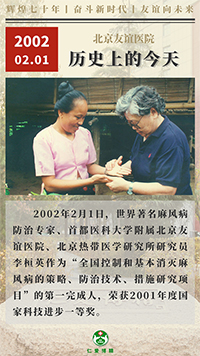

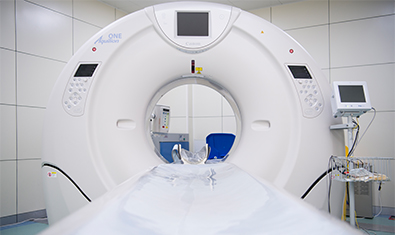
 京公网安备11010202008305号
京公网安备11010202008305号